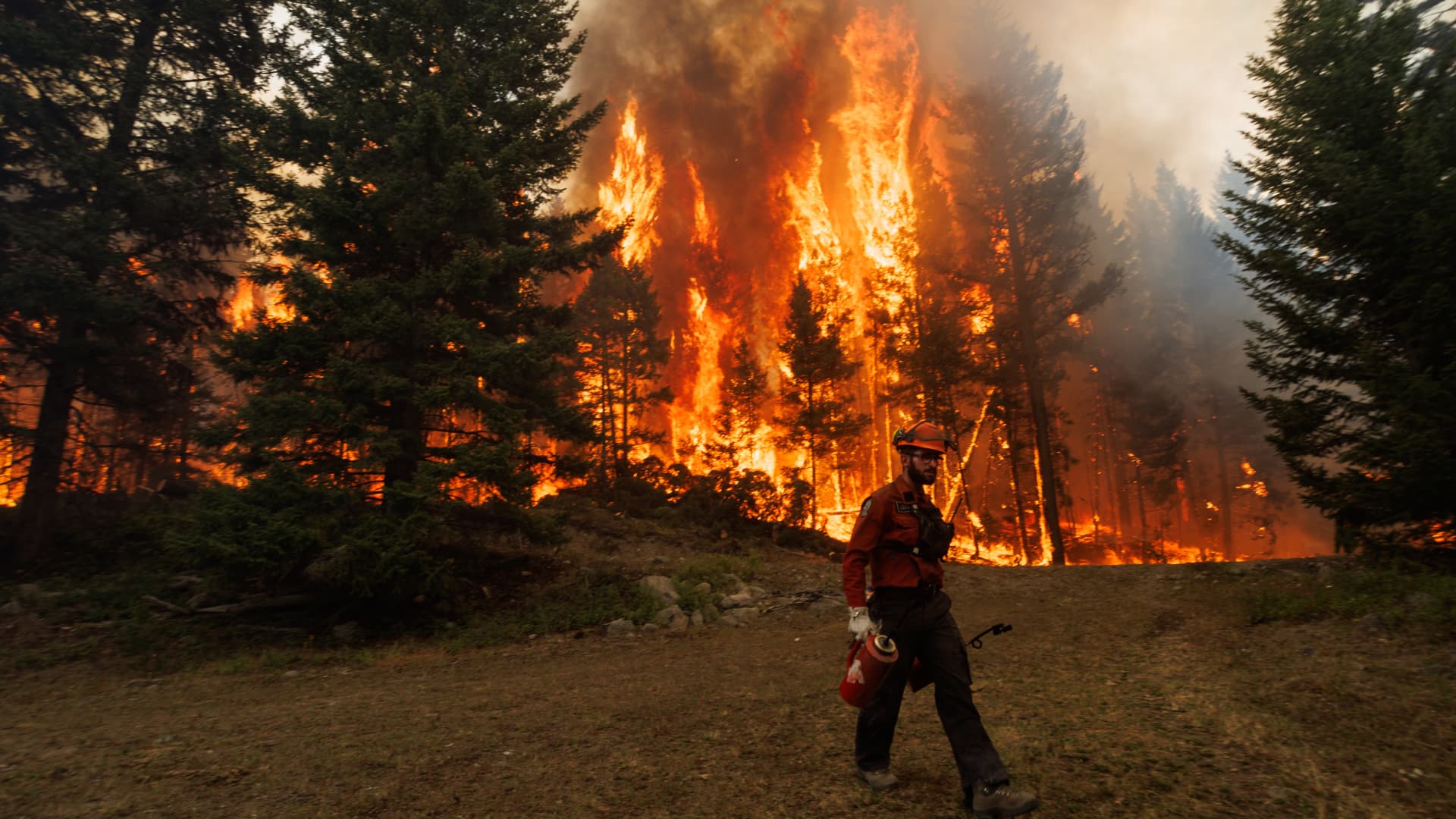A wind change increased flames during a planned ignition on the Ross Moore Lake wildfire in Kamloops, British Columbia, Canada, on July 28, 2023.
Bloomberg | Bloomberg | Getty Images
A series of climate records last year gave new meaning to the phrase “off the charts,” the U.N.’s weather agency said on Tuesday, warning that the planet is now on the brink of surpassing a key warming threshold.
In its annual “State of the Global Climate” report, researchers at the World Meteorological Organization outlined how extreme weather events in 2023 wreaked havoc for millions of people across the globe and inflicted billions of dollars in economic losses.
The WMO said records were broken, and in some cases smashed, for indicators such as greenhouse gas levels, ocean heat and acidification, sea level rise, Antarctic Sea ice cover and glacier retreat.
It confirmed 2023 as the hottest year on record and said the period from 2014 to 2023 also reflected the hottest 10-year period on record.
The global average temperature in 2023 stood at 1.45 degrees Celsius above pre-industrial levels, researchers said, marginally below the key warming threshold of 1.5 degrees Celsius.
The 1.5 degrees Celsius level is widely recognized as an indicator of when climate impacts become increasingly harmful to people and the planet, as outlined in the landmark Paris Agreement.
Sirens are blaring across all major indicators … Some records aren’t just chart-topping, they’re chart-busting. And changes are speeding up.
Antonio Guterres
United Nations Secretary-General
Extreme temperatures are fueled by the climate crisis, the chief driver of which is the burning of fossil fuels.
“Never have we been so close — albeit on a temporary basis at the moment — to the 1.5° C lower limit of the Paris Agreement on climate change,” WMO Secretary-General Celeste Saulo said in a statement.
“The WMO community is sounding the Red Alert to the world,” she said.
“Climate change is about much more than temperatures. What we witnessed in 2023, especially with the unprecedented ocean warmth, glacier retreat and Antarctic sea ice loss, is cause for particular concern.”
‘Sirens are blaring’
The report comes shortly after the European Union’s Copernicus Climate Change Service said that the world surpassed 1.5 degrees Celsius across an entire year for the first time.
The EU climate monitor’s findings, published last month, did not represent a break of the 2015 Paris Agreement, however. The climate accord aims to “limit global warming to well below 2, preferably to 1.5 degrees Celsius, compared to pre-industrial levels” over the long term.
Nonetheless, scientists have repeatedly reinforced the urgent need to slash greenhouse gas emissions in order to avoid the worst of the climate crisis.
Women walk through floodwater in Beledweyne, central Somalia, on May 12, 2023.
Hassan Ali Elmi | Afp | Getty Images
“Earth’s issuing a distress call,” United Nations Secretary-General Antonio Guterres said Tuesday.
“The latest State of the Global Climate report shows a planet on the brink. Fossil fuel pollution is sending climate chaos off the charts,” he added.
“Sirens are blaring across all major indicators … Some records aren’t just chart-topping, they’re chart-busting. And changes are speeding up.”
The world has already warmed by around 1.1 degrees Celsius after over a century of burning fossil fuels, along with unequal and unsustainable energy and land use.
A ‘glimmer of hope’
The WMO’s report said that on an average day in 2023, almost one-third of the world’s oceans were gripped by a marine heatwave, harming vital ecosystems and food systems.
Renewable energy generation was described as one “glimmer of hope,” however.
The WMO said renewable energy generation had surged to the forefront of climate action in 2023, citing its potential to help achieve decarbonization targets.
Indeed, researchers said renewable capacity additions increased by nearly 50% in 2023 to a total of 510 gigawatts. The agency said this was the highest observed rate over the past two decades.







